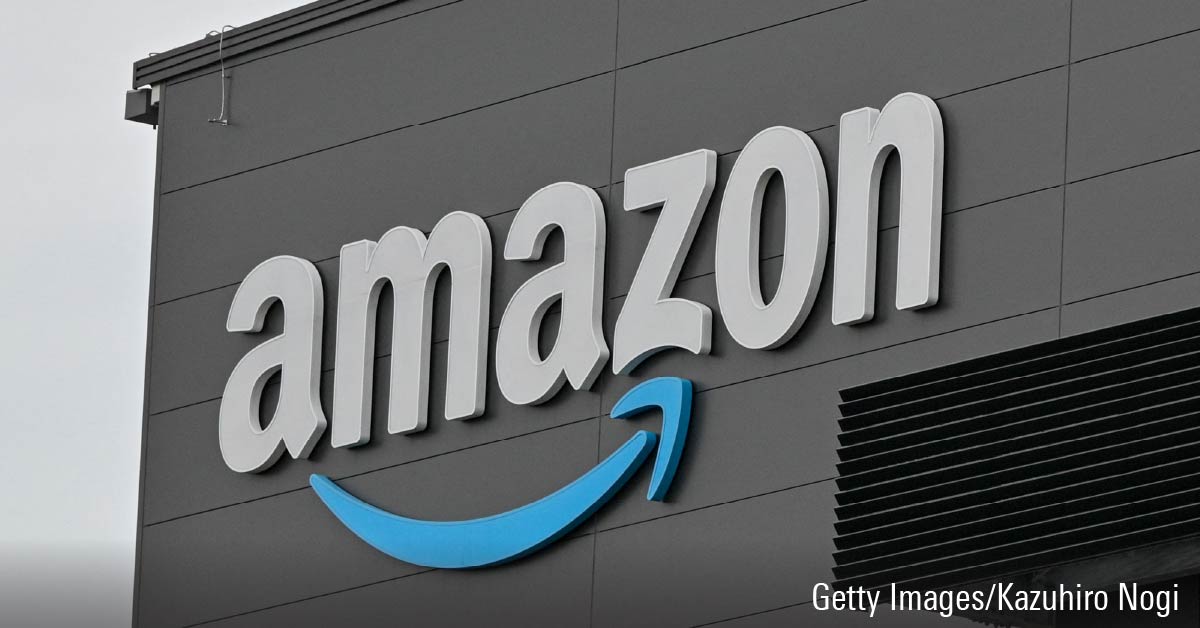
Amazon AMZN is set to release its third-quarter earnings report on Oct. 31. Here’s Morningstar’s take on what to look for in Amazon’s earnings and stock.
Key Morningstar Metrics for Amazon
- Fair Value Estimate: $195.00
- Morningstar Rating: 3 stars
- Morningstar Economic Moat Rating: Wide
- Morningstar Uncertainty Rating: Medium
Earnings Release Date
- Thursday, Oct. 31, before the start of trading
What to Watch for in Amazon’s Q3 Earnings
- Amazon Web Services has been accelerating, with deals getting bigger and for longer terms. Customer optimization efforts are clearly in the past.
- Generative AI is now a multi-billion run-rate business. Capex is ramping, which we are monitoring as it relates to gen AI. We think Amazon is one of several obvious winners in AI, so we don’t think investors will have a problem with additional investment based on demand signals.
- Execution and op margin performance went well in the core e-commerce business in the first quarter. Improvements in fulfillment are boosting margins and improving delivery times. Increased delivery speed means more frequent purchasing for Prime members. The regional hub model is doing well, and management believes there is plenty of opportunity left. US consumers are trading down and looking for deals, while European consumers are more impacted by geopolitical events. Also, the Kuiper satellite project is expected to drag on margins, so the dynamic of improving ops and Kuiper will be a tug-of-war
- Management is again moving forward with grocery store (Fresh stores) openings. This is a small but interesting development.
- Advertising continues outperforming peers, and Amazon recently rolled out new ad programs and formats. We’re expecting strength here, especially as holiday shopping begins.
Fair Value Estimate for Amazon
With its 3-star rating, we believe Amazon’s stock is fairly valued compared with our long-term fair value estimate of $195 per share, which implies a 2024 enterprise value/sales multiple of 3 times and a 2% free cash flow yield. We think multiples are a little less meaningful for Amazon, given the ongoing heavy investment and rapid scaling that depresses financial performance. However, we expect the company to significantly grow its free cash flow as it matures.
Over the long term, we expect e-commerce to continue to take share from brick-and-mortar retailers. We further expect Amazon to gain share online. We believe that over the medium term, covid pulled forward some demand by changing consumer behavior and better penetrating some retail categories, such as groceries, pharmacy, and luxury goods, that previously had not gained as much traction online. We think Prime subscriptions and the accompanying benefits (along with selection, price, and convenience) continue to drive the retail story. We also see international as being a longer-term opportunity within retail. We model total retail-related revenue growing at an 8% compound annual growth rate over the next five years.
Read more about Amazon’s fair value estimate.
Economic Moat Rating
We assign a wide moat rating to Amazon based on network effects, cost advantages, intangible assets, and switching costs. Amazon has been disrupting the traditional retail industry for more than two decades, while also emerging as the leading infrastructure-as-a-service provider via Amazon Web Services. This disruption has been embraced by consumers and has driven change across the entire industry, as traditional retailers have invested heavily in technology in order to keep pace. Covid-19 has accelerated change, and given the company’s technological prowess, massive scale, and relationship with consumers, we think Amazon has widened its lead, which we believe will result in economic returns well in excess of its cost of capital for years to come.
Read more about Amazon’s economic moat.
Financial Strength
We believe Amazon is financially sound. Revenue is growing rapidly, margins are expanding, the company has unrivaled scale, and the balance sheet is in great shape. In our view, the marketplace will remain attractive to third-party sellers, as Prime continues to tightly weave consumers to Amazon. We also see AWS and advertising driving overall corporate growth and continued margin expansion.
As of Dec. 31, 2023, Amazon had $86.8 billion in cash and marketable securities, offset by $58.3 billion in debt. We also expect free cash flow generation (which suffered during the pandemic as the company invested heavily in facility expansion, content creation, and its transportation network) to return to normal over the next few years.
Read more about Amazon’s financial strength.
Risk and Uncertainty
We assign Amazon an Uncertainty Rating of Medium. The firm must protect its leading online retailing position, which can be challenging as consumer preferences change, especially postcovid (as consumers may revert to prior behaviors), and as traditional retailers bolster their online presence. Maintaining an e-commerce edge has pushed the company to make investments in nontraditional areas, such as producing content for Prime Video and building out its own transportation network. Similarly, the company must also maintain an attractive value proposition for its third-party sellers. Some of these investment areas have raised investor questions in the past, and we expect management to continue to invest according to its strategy, despite periodic margin pressure from increased spending.
Read more about Amazon’s risk and uncertainty.
AMZN Bulls Say
- Amazon is the clear leader in e-commerce and enjoys unrivaled scale to continue to invest in growth opportunities and drive the very best customer experience.
- High-margin advertising and AWS are growing faster than the corporate average, which should continue to boost profitability over the next several years.
- Amazon Prime memberships help attract and retain customers who spend more with Amazon. This reinforces a powerful network effect while bringing in recurring and high-margin revenue.
AMZN Bears Say
- Regulatory concerns are rising for large technology firms, including Amazon. Further, the firm may face increasing regulatory and compliance issues as it expands internationally.
- New investments—notably in fulfillment, delivery, and AWS—should dampen free cash flow growth. Also, Amazon’s penetration into some countries might be harder than in the United States because of inferior logistical networks.
- Amazon may not be as successful in penetrating new retail categories, such as luxury goods, because of consumer preferences and an improved e-commerce experience from larger retailers.
This article was compiled by Renee Kaplan.
The author or authors do not own shares in any securities mentioned in this article. Find out about Morningstar's editorial policies.























